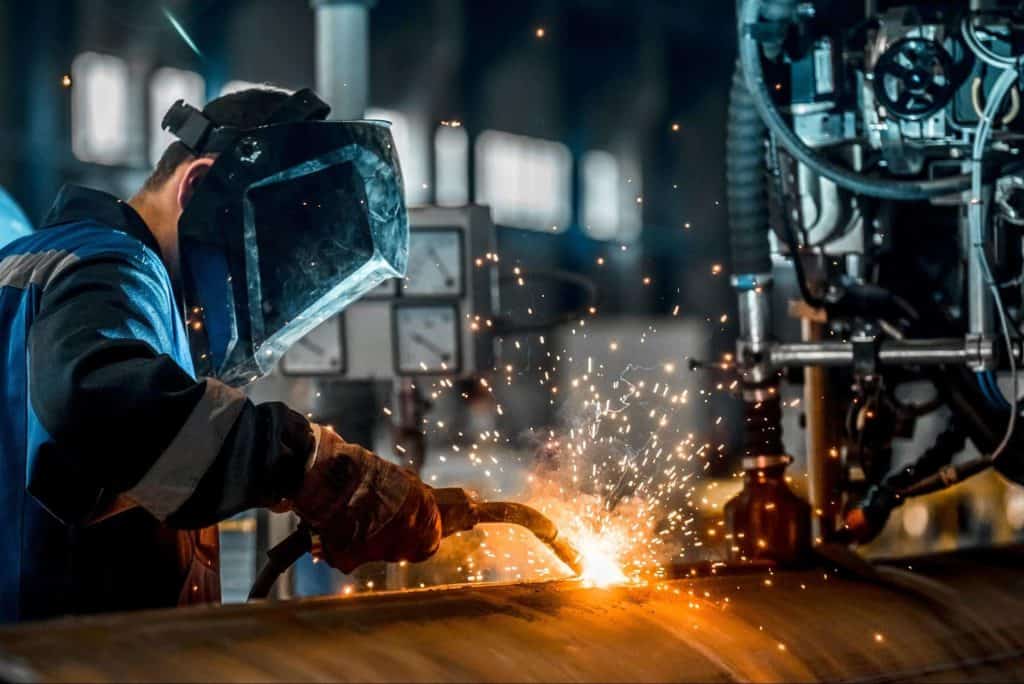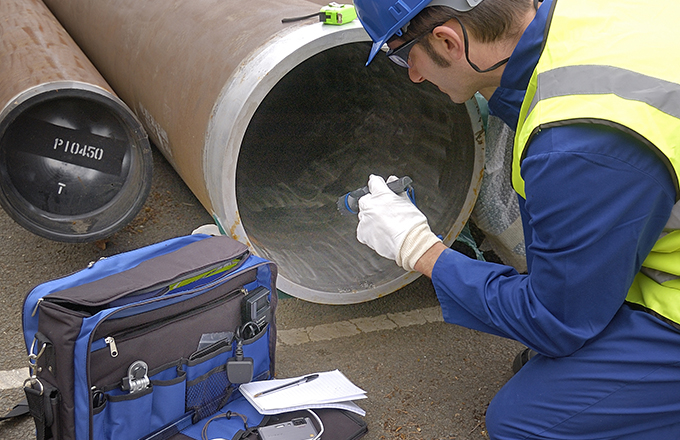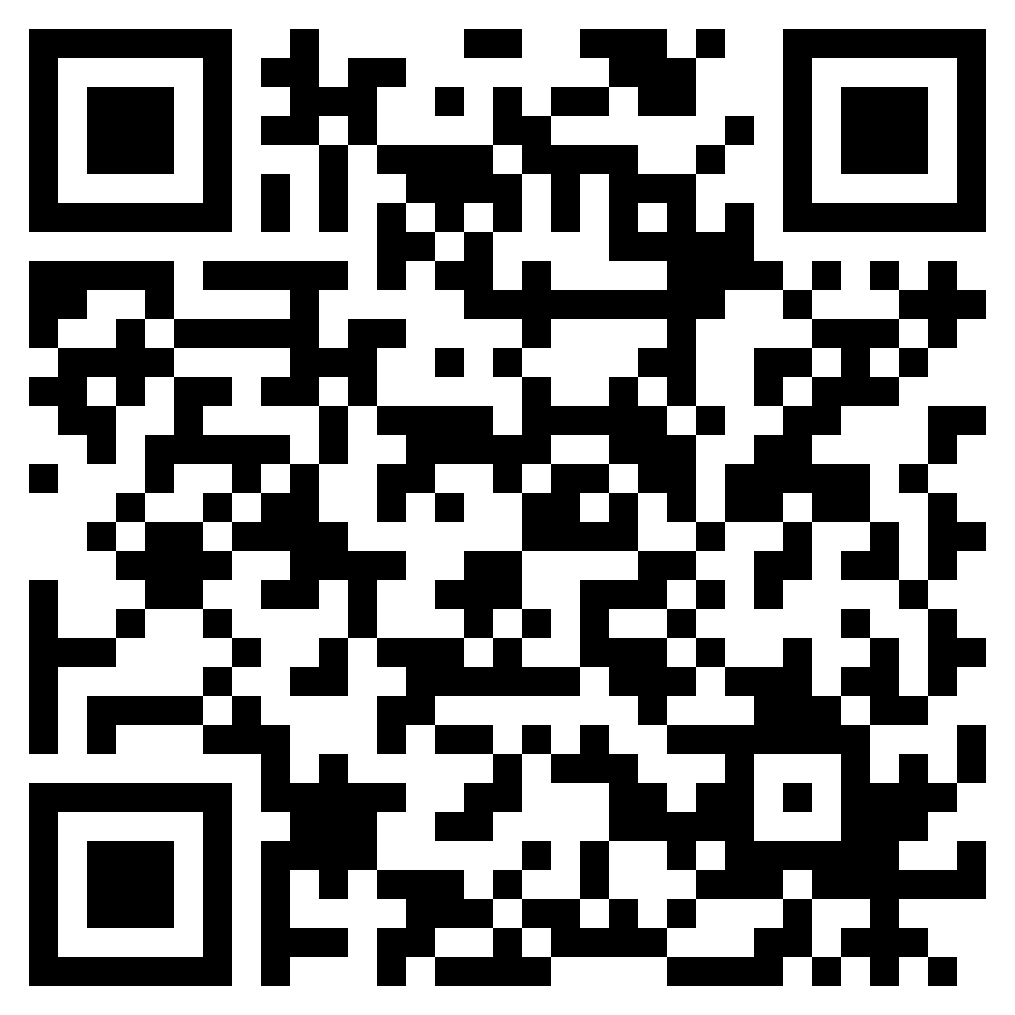How Welding Inspection Milwaukee Can Conserve You Money over time
How Welding Inspection Milwaukee Can Conserve You Money over time
Blog Article

Checking Out the Different Techniques and Specifications of Welding Assessment for Achieving Conformity and Dependability in Design Applications
The relevance of welding examination in engineering applications can not be overemphasized, as it offers as a crucial secure for making certain architectural integrity and compliance with market criteria. Numerous approaches, including visual assessment and progressed non-destructive screening methods, provide vital understandings right into the high quality of welds.
Relevance of Welding Examination
Welding assessment plays an important duty in guaranteeing the integrity and safety and security of welded structures. The importance of welding examination can not be overstated, as it offers as a protect versus prospective failings that might result from inadequate welding techniques.
Additionally, welding evaluation is important for preserving high quality guarantee throughout the welding process. It guarantees that the welds fulfill the needed mechanical and physical residential properties required for their desired applications. Regular evaluations also promote a society of accountability and continual renovation within welding procedures, motivating adherence to best practices and sector criteria.
In regulated markets such as building and construction, production, and aerospace, rigorous welding inspection protocols are mandated to adhere to legal and security demands. Inevitably, efficient welding examination not only shields human life and residential or commercial property however likewise boosts the long life and reliability of welded structures, making it a crucial facet of design and construction.

Typical Welding Inspection Methods
A selection of examination approaches are used to analyze the quality and honesty of welds, each customized to find certain kinds of issues. Amongst one of the most typical techniques is visual evaluation, which includes a complete assessment of the weld surface to identify noticeable imperfections such as cracks, damages, and insufficient fusion. This approach is commonly the initial action in the evaluation process as a result of its simpleness and cost-effectiveness.
Another commonly made use of technique is radiographic inspection, where X-rays or gamma rays pass through the weld to expose internal issues. This strategy is especially effective for spotting porosity and inclusions within the weld product. Similarly, ultrasonic screening utilizes high-frequency acoustic waves to determine internal problems, giving a comprehensive analysis of the weld's stability.
In addition, magnetic bit inspection is used for ferromagnetic products, enabling the detection of surface area and near-surface problems by using magnetic fields and observing particle patterns. Color penetrant screening involves applying a fluid color to the weld surface area, revealing fractures and various other gaps upon examination (Welding Inspection Milwaukee). Each of these approaches plays a vital duty in guaranteeing weld high quality and conformity with industry criteria
Non-Destructive Checking Methods
Non-destructive screening (NDT) strategies are essential tools in the assessment of weld top quality, allowing inspectors to review the stability of welded joints without creating damages to the products. Numerous NDT methods are utilized to recognize possible issues, ensuring that welds meet the required standards for security and performance.
One of one of the most prevalent techniques is ultrasonic screening (UT), which uses high-frequency acoustic waves to find inner imperfections such as spaces or fractures. Radiographic testing (RT) employs X-rays or gamma rays to generate pictures of welds, exposing any type of interruptions within the product. Magnetic bit testing (MT) works for finding surface and near-surface problems in ferromagnetic materials via the application of magnetic areas and contrasting fragments.
Fluid penetrant screening (PT) is one more widely made use of technique that includes applying a color to the surface of the weld, which seeps right into any type of fractures, making them noticeable under ultraviolet light. Each of these techniques offers unique benefits and limitations, and the choice of an appropriate strategy is critical to attaining precise evaluations of weld honesty. Eventually, the implementation of NDT techniques substantially adds to the reliability and safety of engineering applications.

Regulatory Specifications and Conformity
In the realm of welding inspection, adherence to regulative criteria and conformity is paramount to make certain the security and integrity of welded structures (Welding Inspection Milwaukee). Different organizations, including the American Welding Society (AWS), the American Culture of Mechanical Engineers (ASME), and the International Company for Standardization (ISO), have actually established standards that govern welding methods and inspection procedures. These requirements give a framework for quality control, laying out the essential certifications for examiners and the techniques for analyzing weld integrity
Compliance with these regulative standards not only enhances the structural integrity of welded assemblies yet additionally mitigates risks associated with failures, which can have catastrophic repercussions. Examinations have to be executed making use of specified treatments, consisting of visual, ultrasonic, and radiographic techniques, to ensure that welds meet specified standards.
Moreover, adherence to these requirements is typically needed by regulation, specifically in markets such as aerospace, building, and manufacturing. Normal audits and accreditations are necessary to preserve compliance, consequently cultivating a society of safety and quality within companies. Eventually, regulatory requirements and compliance offer as the backbone of reliable welding evaluation practices, making certain that engineered frameworks meet both efficiency expectations and security requirements.
Best Practices for Welding Examination
While maintaining compliance with regulatory requirements is crucial, executing finest practices for welding inspection additionally enhances the security and integrity of bonded structures. More about the author Effective welding evaluation starts with detailed preparation, that includes comprehending the particular demands of each important link project and making sure assessors are well-trained in relevant methods and requirements.
Using a comprehensive assessment checklist helps to ensure all essential elements are assessed, such as weld size, penetration, and visual issues. Non-destructive screening (NDT) techniques, such as ultrasonic or radiographic screening, must be utilized where suitable, giving a more thorough assessment of weld quality without endangering the integrity of the products.
Documents plays a substantial role in best practices; maintaining accurate documents of evaluations, including photographs, test results, and conformity records, guarantees responsibility and helps with future assessments. Additionally, fostering a culture of open interaction in between welders and assessors can cause early identification of prospective issues, promoting instant restorative actions.
Verdict
In recap, the execution of strenuous welding examination techniques and adherence to established standards are important for guaranteeing conformity and dependability in engineering applications - Welding Inspection Milwaukee. Strategies such as aesthetic evaluation, radiographic screening, and ultrasonic testing work as essential tools in keeping and determining defects quality guarantee. By promoting a culture of responsibility and excellence, companies can enhance the honesty and durability of bonded frameworks, inevitably contributing to the safety and security and effectiveness of engineering jobs
Various techniques, consisting of visual evaluation and progressed non-destructive screening techniques, supply vital understandings into the quality of welds.Welding examination plays a vital role in ensuring the honesty and security of bonded frameworks.A variety of assessment methods are used to examine the top quality and integrity of welds, each tailored to identify specific types of defects.One more extensively made use of method is radiographic evaluation, where my explanation X-rays or gamma rays pass through the weld to reveal internal problems.In the realm of welding examination, adherence to regulatory standards and compliance is paramount to make sure the safety and security and reliability of welded structures.
Report this page